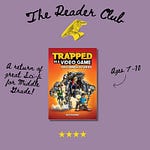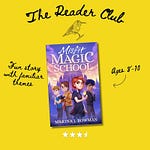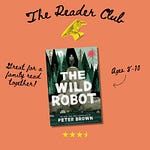Intro to Book
Hello Readers,
I’ve always said that if it hypothetically came down to it, between never seeing and never hearing again, I’d pick never seeing. Music drives and lifts us, inspires our creativity, and bursts our hearts in emotions. It’s not that seeing doesn’t do this, I think I just like music. But after reading the book I’m reviewing this week, I’ve got to admit, that being left in the dark 24/7 would be difficult. Praise God I still have all my senses, and so do the characters in the book by the way. But they still live in the dark, and somehow, it seems worse than losing either sense.
Today we’re talking about Shiloh by Helena Sorensen. This is an older series, it was published in 2013, but I recently stumbled across it, and seemed interesting enough to purchase the entire series on my Kindle. To be frank, I often read these books on my Kindle. Not much storage for books in the house, so I’m pickier about which ones I buy. Also, I find it almost a sin to throw away a book, and if I don’t have a place for it, my wife will certainly encourage me to throw it away. So, it was a Kindle purchase. But, I’m glad I bought the first book, and if the rest are as good, I’ll be very satisfied with the series. You see, the world of Shiloh is interesting to me. It is a world of utter darkness. Filled with creatures made of darkness. And humans exist in the world and must make it by with very little light. No night sky, no sunny day. Just dense darkness.
Summary
The book starts off not with the hero, or heroes, of the story, but rather with a prologue of sorts. It starts by telling the reader about the creation of Shiloh and how the darkness came to be. If you’re a fan of the Greek epics, which I happen to be, this story within a story is a fantastic start. It’s like a miniature story of the beginning of this world, really setting the reader up for a fantastic land. I was reminded of The Worm Ouroboros by E.R. Eddison. Another great story if you haven’t read it. Long-winded and more for the adult, it is still a fantastic book. Anyway, this book starts with an epic and from it flows a cast of characters who continually take steps and paths I cannot foresee coming.
After the beginning, we run into the world of darkness where humans live. Much of their lives could be thought of as old. Think middle-ages, but no suits of armor. Everyone hunts with a bow and is known for how skilled they are with it. One boy gets further renown from being able to speak fire into existence from nothing. A rare trait that hasn’t been seen in hundreds of years.
But this renown also marks him with unsavory characters and a dark lord who lives in the world and controls it with his dark minions made of darkness. Okay, so merely repeating “dark” and “darkness” is probably not painting the picture I have in my head. I imagined a world of perpetual, thick fog. But unlike the often blinding fog of daylight, a fog so black it seems to absorb the light that attempts to penetrate it. The dark lord who controls it, with creatures so crusted in the same darkness they are impossible to see except their glowing eyes as they come upon you and you realize it is too late, make this book very dark. But, some people in Shiloh believe in light. That it once existed, and that it could be found again.
Characters
Okay, so the cast of characters is rather large. I’ll try to keep my scope to only the main characters. Of which there are quite a few.
Amos is probably the most famous character. And yes, I said it because it rhymes. He is the boy who has great aim and can speak fire into existence. His renown goes through the entire world to all the tribes of people living in darkness. Oh, and he fears nothing.
Simeon is Amos’s best friend. Where Amos is everything great and mighty, Simeon is not. He is about as puny and useless as can be imagined in a world of perpetual darkness. He lives in Amos’s shadow, or whatever they would call it. Not many shadows in that world…
Phebe spelled P H E B E but pronounced how I said it, Sorensen offered a cheat sheet in the back of the book. In the back, so when I found it I realized I had been pronouncing it wrong in my head. Anyway, she is a great little girl and despite all the darkness, holds onto that glimmer of hope and light as long as she can.
Rosalyn is the older sister of Isolde. Their family lives in another tribe far away from Amos, Simeon, and Phebe. But we see her story, mostly Isolde’s story, side by side to Amos and his family.
Isolde is a headstrong girl who often gets the brunt of her father’s abuses because she is stubborn. I really appreciated her stubbornness in this dark world as it makes her tough when she grows up.
Amos and Phebe’s parents are a large part of this story. They are often called strange people because they believe the light exists. Simeon has a single mom, but she never had a husband. She is the magistrate of Shiloh, inheriting the position from her father, and so nobody really speaks about Simeon, who looks nothing like her.
There are townsfolk who also are important, the most important being Darby and Orin being the most important.
Then there are the dark creatures and people who serve the dark lord. But saying too much of it would spoil the story.
Analysis
This book is great. I’m reminded of so many of the older fantasies I fell in love with. I already mentioned one, The Worm Ouroboros, and the other, The Well at the World’s End by William Morris. So much of Sorensen’s writing reminds me of these old stories. For reference, these were both published over 100 years ago, and Morris’s book was published over 125 years ago. I honestly hope the age of these stories doesn’t dissuade you from reading the book. This era of writing had some of the greatest writers of all time. Sorensen writes a story like some of the greatest of all writers. But still, there were times I was confused and had to read sections over again. It all flowed and made sense upon the second reading, but like those writers, there are many layers to her writing.
Major Themes:
For sure the major theme in this book is overcoming darkness before it takes you. Sometimes it literally takes the characters away. As I mentioned at the beginning, no one has a loss of sight, however, they are in darkness. And that darkness can be seen almost to our own walk in darkness. We may not be blind, but we walk in a spiritual darkness and I believe this is the comparison Sorensen is making.
Writing Style:
As stated previously, the writing of this book feels like the writing of authors from a century ago who wrote primarily for adults. It is written for teens at the very least, but could even appeal to adults who want a thick, dark fantasy novel. But it is clean. She is a regular contributor to Story Warren, a Christian publishing/author/creative/support organization. I assume from this she is a Christian and purposefully kept the story clean. Also purposefully making allusions to the Christian walk. But so deep that at first glance it would be hard to find. And still moments of brutal and grotesque violence or corruption. I would age this maybe 14 to 15 and up. It would be up to your discernment on whether your 14 or 15-year-old could handle the dark and mature themes of this book.
Plot:
The plot is a bit scattered. It begins at the creation of the world, then jumps into the story of Amos and his family when he is young, then jumps to Isolde and her family, then jumps years ahead, and then again. It isn’t impossible to follow, but the jumpiness would be more difficult for the younger reader who would need to stay in a single timeline. Because of this, it would also take the more abstract thinking of the mid to older teen of 15 and up to really follow the story. As I said, there were parts I had to read twice for the same reason. But for the reader who sticks to it, the story is worth it.
Gospel Connections:
I honestly don’t know where to start here. Not because of the great difficulty of tying this story to the Gospel, but because it ties so neatly throughout the whole story it is difficult to begin. Like Pilgrim’s Progress, this story can be seen as an allegory of the Christian life. Though the god of this world operates quite differently than Yahweh, our God, there are still similarities. The world is created and darkness is created with it. Then humans are born into darkness, perpetually living in it, and very few make it into the light of the world it was intended to be.
Darkness could be seen as sin, and being born of a sinful nature the people living in darkness can be like us born into sin. They live and die in darkness, never seeing the light. However, there are stories about the light. Stories about the sun and stars, but they aren’t often believed by many people. The ones who do believe are seen as crazy because there is no one who can see the light.
There are wise people, like prophets, who speak wisdom to the people. There are sinister people who seek to turn any potential believers of the light back to the darkness. Then the lives of the main characters, Amos, Phebe, Simeon, and Isolde (not particularly Rosalyn though) are seen as different takes of the Christian walk getting to the light.
I’m not going to get into too much detail on how each person’s life works in conjunction with the Christian walk, but I will give a summation in a non-specific order. There is the consistent Christian who always holds to hope, the Christian who walks away, the Christian who lets fear take them, and the Christian who is raised to believe, but only comes to true faith later in life.
Again, it is quite the story and quite worth the read, especially if you enjoy epic allegorical tales in fantastic worlds. Also, I want to just say, it cannot be easy to create landscapes, towns, and all other points of reference when dealing with a world of complete darkness, and yet Sorensen did, all while making an enjoyable story with deep but subtle Christian themes.
Social Impact:
This book has many social implications. There are friendships that can be drawn out of the book in many applicable ways. Simeon living in Amos’ shadow and relying heavily upon Amos’ parents and sister for his found family. Many surrogate fathers for a fatherless boy as well.
There are deep sibling connections seen in the book. Between Amos and Phebe as well as between Isolde and Rosalyn. They are broken, but the siblings still stick close together.
There is the loss of someone important in your life. The struggles of life bearing down on you and finding hope despite it. There is the realization of things wrong with the world and yet God still being good. I feel this last one fits socially because it is so difficult to communicate this truth to the world, but the book does it well. There are political tensions. There are physical tensions. There is the dark winding road that calls you and the light that beckons you and the fight between them.
In any case, there are social implications and many conversations to be had about the book.
Final Thoughts
I would give this book a solid 4.5 out of 5. It is a great book, reminiscent of some of my favorite classics by authors like Lewis and Tolkien (more of my favorites) who likewise wrote stories that allegorized the Christian faith. Not as pointedly as Pilgrim’s Progress but still were allegories nonetheless. Likewise, Sorensen has written a story that poignantly allegorizes the Christian walk. I say that, but the end is not quite as despondent as the rest of the story. It is bleak. But because Sorensen doesn’t hold back on this element of sadness (seriously, it just keeps getting bleaker as the story goes on) it makes the story better. Who ever said this life was easy and full of happy, happy, joy, joy feelings all the time? It isn’t. Bad things happen. The more important thing is what you’ll do when darkness comes for you. Will you overcome it, or will it take you?
Until next time, have a good read.













Share this post